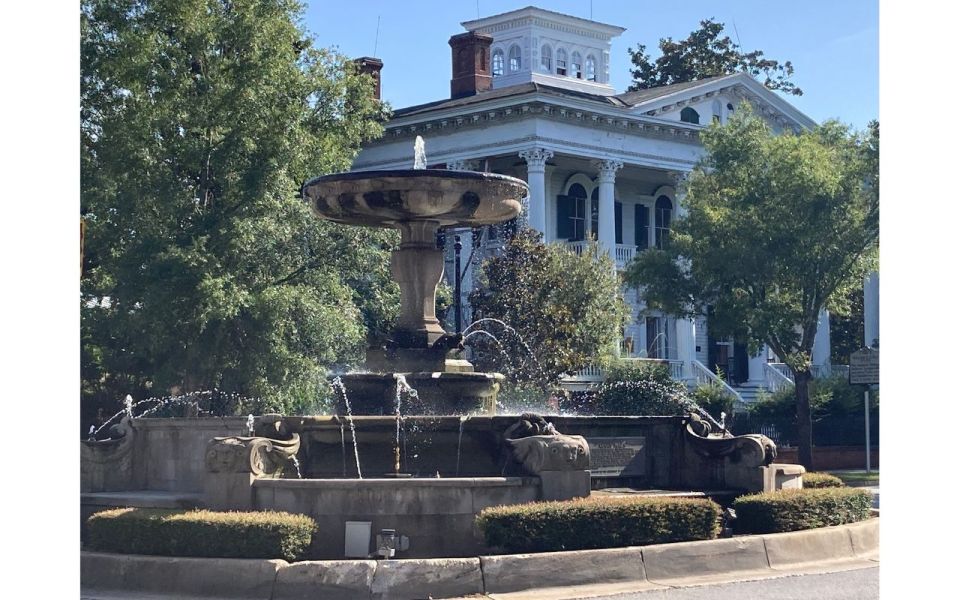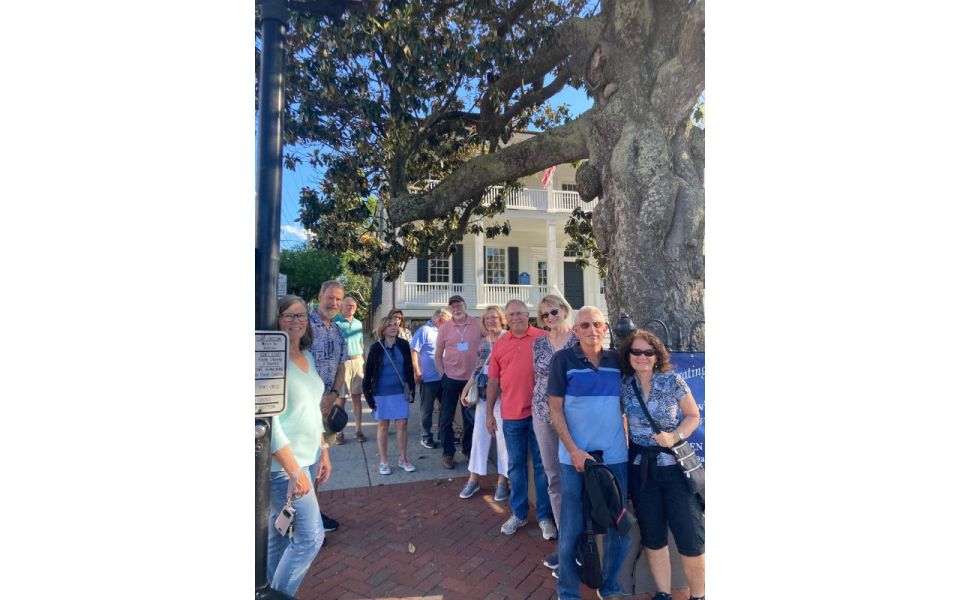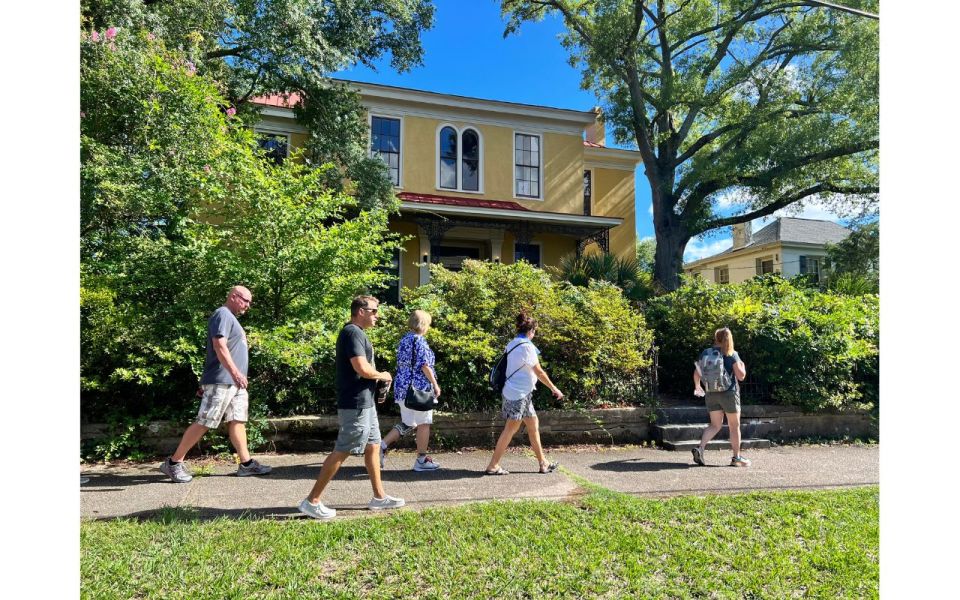Wilmington’s rich history and architectural gems come alive through the captivating History and Architecture Tour. Led by knowledgeable guides, this immersive experience takes visitors on a journey spanning Wilmington’s colonial roots, industrial prosperity, and resilience in the face of adversity. From the well-preserved colonial-era block to the grandiose Victorian-era structures and notable houses of worship, the tour unveils the town’s strategic significance as a vital port and railroad hub. Explore Wilmington’s transformation into a thriving tourism destination and uncover the stories that have shaped its enduring legacy.
Key Points

- The 1.5-hour guided tour covers Wilmington’s colonial-era architecture, Victorian-era prosperity, and the town’s role as a vital port and railroad hub.
- Guests explore the only remaining colonial-era block in Wilmington, showcasing well-preserved 18th-century structures and insights into the lives of early inhabitants.
- The tour highlights Wilmington’s grand religious architecture, including the neo-Gothic St. James Episcopal Church and the Basilica Shrine of St. Mary.
- Participants learn about Wilmington’s strategic importance during the Civil War and its resilience through the Reconstruction era, becoming a thriving commercial and industrial center.
- The tour provides an in-depth look at the elegant Victorian-style homes of Wilmington’s industrial captains, reflecting the town’s prosperous past and evolution into a tourism hub.
Tour Details and Highlights

The tour provides a comprehensive look at Wilmington’s history and architecture, covering the town’s Victorian-era buildings, notable houses of worship, and survival through the Civil War and Reconstruction.
Priced at just €23.14 per person, the 1.5-hour tour is led by a live English-speaking guide.
Guests will experience the best of Wilmington’s Victorian architecture and learn how the town weathered the Revolutionary and Civil Wars, the racial events of 1898, and its transformation into a film and tourism hub.
Highlights include seeing the city’s most notable homes and churches, with the tour loop lasting 100 minutes.
Sunscreen and bug spray are provided, and the meeting point is easily accessible with nearby meter parking.
You can also read our reviews of more historical tours in Wilmington North Carolina
Town’s Colonial Era Block

As the tour weaves through Wilmington’s only remaining colonial-era block, visitors can admire the well-preserved 18th-century architecture that has withstood the test of time.
These historic structures, built during the colonial period, offer a glimpse into the town’s early development. Sturdy brick facades and traditional design elements, such as pitched roofs and symmetrical windows, characterize the buildings in this picturesque district.
The guide will share insights into the lives of the original inhabitants and how the community evolved over the centuries. Strolling through this charming area provides a tangible connection to Wilmington’s rich past, allowing visitors to imagine the town in its formative years.
Wilmington’s Victorian Architecture

Wilmington’s Victorian architecture showcases the town’s prosperity during the late 19th century.
Stately mansions and ornate commercial buildings from this era line the streets, reflecting the community’s growing wealth and architectural sophistication.
Visitors can admire the intricate details, varied materials, and diverse styles that characterize this period of Wilmington’s built environment.
From the towering spires of churches to the elaborate ironwork adorning private residences, the Victorian influence is evident throughout the historic district.
This architectural legacy not only provides a glimpse into Wilmington’s past but also contributes to the town’s ongoing appeal as a destination for travelers interested in exploring its rich history and well-preserved historic structures.
Notable Houses of Worship

Amidst Wilmington’s historic streets, visitors can find several notable houses of worship that showcase the town’s religious diversity and architectural grandeur.
The neo-Gothic style St. James Episcopal Church, dating back to the 1850s, impresses with its stained-glass windows and ornate spire.
Nearby, the red-brick First Presbyterian Church boasts an impressive Romanesque Revival facade.
Farther downtown, the Basilica Shrine of St. Mary captivates with its Italian Renaissance design and intricate interior.
These beautiful structures not only serve as places of faith but also as testaments to Wilmington’s rich history and the skilled craftsmanship of bygone eras.
Exploring these sacred spaces provides a deeper appreciation for the town’s past and present religious heritage.
More Great Tours NearbyCivil War and Reconstruction
During the Civil War, Wilmington played a crucial role as the lifeline of the Confederacy, serving as a vital port for blockade runners that smuggled supplies past the Union’s naval blockade.
Despite the challenges of wartime, the town managed to survive the conflict and eventually thrived during the Reconstruction era, emerging as an important commercial and industrial center.
As the South struggled to rebuild, Wilmington’s strategic location and resilience enabled it to become a hub of economic activity, with the town’s industries and transportation networks playing a key role in the region’s recovery.
This period of growth and reinvention laid the foundation for Wilmington’s future as a vibrant and prosperous community.
Wilmington as Port and Railroad Town

As a port and railroad town, Wilmington leveraged its strategic location on the Cape Fear River to become a vital economic hub in the region.
The town’s harbor and extensive rail connections enabled the efficient transportation of goods, fueling its growth as a commercial and industrial center.
Wilmington’s status as a key port facilitated the import and export of a wide range of products, from agricultural goods to manufactured items.
Plus, the town’s railroad network linked it to major cities across the South, allowing for the seamless movement of freight and passengers.
This combination of maritime and rail infrastructure was instrumental in Wilmington’s development as an economic powerhouse in the late 19th and early 20th centuries.
Homes of Industrial Captains
The tour explores the grand homes of Wilmington’s industrial captains, who built impressive residences that reflected their wealth and status during the mid-19th century.
These elegant Victorian-style houses showcase the opulence and prosperity of the town’s business elite, from shipping magnates to railroad tycoons.
Visitors will marvel at the intricate architectural details, such as ornate facades, ornamental woodwork, and expansive verandas.
The tour guides share insights into the lives and legacies of these industrial titans, who played a pivotal role in Wilmington’s transformation into a thriving commercial hub.
Through these historic homes, guests gain a deeper understanding of the town’s prosperous past and the families who shaped its development.
Wilmington’s Emergence as Tourism Hub
After exploring the grand homes of Wilmington’s industrial captains, the tour shifts its focus to the town’s emergence as a thriving tourism hub.
Wilmington’s natural beauty, rich history, and growing film industry have all contributed to its transformation into a popular destination for visitors from near and far.
The tour highlights how the town’s idyllic riverfront, Victorian architecture, and well-preserved historic sites have made it a prime spot for leisure and sightseeing.
Visitors can experience Wilmington’s evolving identity as it transitions from a port and railroad hub to a budding tourism and film production center, showcasing the city’s versatility and resilience over the centuries.
Frequently Asked Questions
What Types of Payment Methods Are Accepted for This Tour?
The tour accepts various payment methods, including credit cards and cash. Specific details on accepted payment options are not provided in the given knowledge, so customers should inquire directly with the tour operator prior to booking.
Are There Any Discounts or Special Offers Available for This Tour?
Yes, the tour operator offers discounts for seniors, students, and children. Plus, there are special deals available for groups of 4 or more. It’s best to check the website or contact the operator for the latest offers.
Can the Tour Be Customized or Personalized for Specific Interests?
The tour can likely be customized or personalized for specific interests. Customers should inquire with the tour provider about options to tailor the experience to their preferences, such as focusing on architecture, Civil War history, or other areas of interest.
Is There a Dress Code or Any Special Requirements for Participants?
There is no specific dress code for the tour, but comfortable walking shoes are recommended. Participants should bring any personal items they may need, such as water, sunscreen, or a hat, as the tour is primarily outdoors.
Are There Any Accessibility Accommodations for Guests With Disabilities?
The tour provides accessibility accommodations for guests with disabilities, including wheelchair accessibility and assistance from the live tour guide. Participants are encouraged to inquire about specific needs when booking the tour.
Recap
The Wilmington History and Architecture Tour offers visitors a captivating glimpse into the town’s rich past.
Exploring its well-preserved colonial-era block, grand Victorian-era architecture, and notable houses of worship, the tour provides insights into Wilmington’s strategic role as a vital port and railroad hub, the prosperity of its industrial captains, and its transformation into a thriving tourism destination.
It’s a must-see for those seeking to enjoy the town’s enduring historical significance.
You can check availability for your dates here:More Historical Tours in Wilmington North Carolina
More Tours in Wilmington North Carolina
More Tour Reviews in Wilmington North Carolina
Not for you? Here's more nearby things to do in Wilmington North Carolina we have reviewed
- 3.25-Hour Wilmington Airlie Gardens E-Bike Self-Guided Tour
- Wilmington: Eagles Island Cruise–Eco-History Cruise
- Wilmington: Boos and Booze Haunted Pub Crawl
- Dark History: Wilmington Coup and Massacre Historic Tour
- True Crime Tour of Wilmington
- Wraiths & Wicked Whispers: Wilmington Ghost Tour
- Wilmington, NC: A Tarot Reading Experience
- Downtown Wilmington Historian-Guided Tour
- 5-Hour Wilmington River to Sea E-Bike Self-Guided Tour
- 2-Hour, 45-Minute Tour de Wilmington E-Bike Tour
- 2 Best 2 Hour Tours and Experiences in Wilmington North Carolina
- Wilmington: Ghosts of the Port City Haunted Walking Tour
